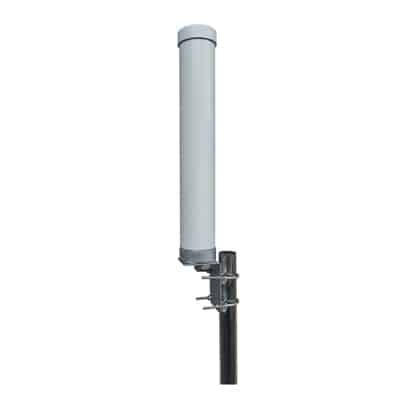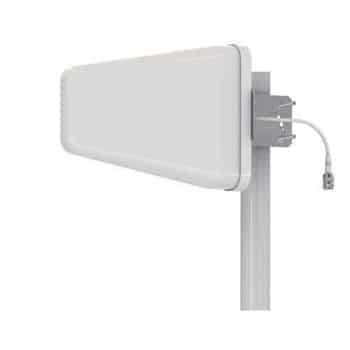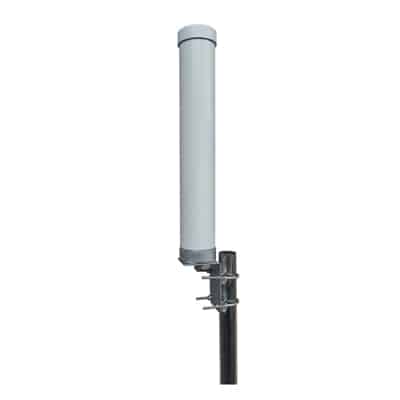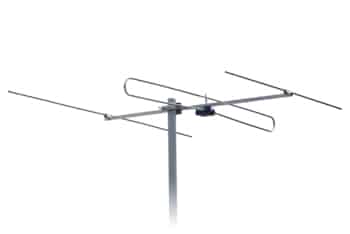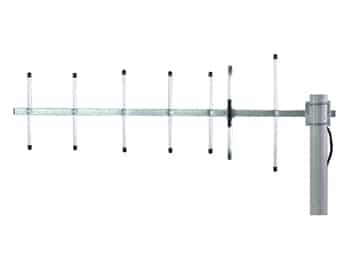Each cellular network is designed to meet the increasing demands of users better than ever. People heavily rely on wireless networks for connectivity and communication. Cellular networks allow them to enjoy different desirable services including video streaming, virtual conferences, and fast downloading/uploading over high data rate, larger frequency band, and security collaboration. The increase in user demands has led to the emergence of new cellular generations one after the other. 4G LTE, standardized by 3GPP, has become a highly flexible and accommodating network that allows network operators to fulfill the customer demands efficiently.
We have introduced what is 4G LTE in detail before, now this article provides a detailed overview of 4G LTE and what are its frequency bands. Also, it sheds light over the 5G spectrum in comparison to 4G spectrum. So, let’s begin:
Table of Contents
ToggleWhat is 4G LTE
4G LTE is the next cellular generation after the 3G networks i.e. Universal Mobile Telecommunications System (UMTS). LTE stands for Long Term Evolution which is the worldwide standard used for 4G wireless data transmissions.
4G LTE was introduced in the year 2008, bringing along various features that 3G networks failed to provide such as high speed data rate (up to 100Mbps theoretically and 15Mbps practically), low latency enabling Voice over IP (VoIP) services, increased bandwidth, and broadband access. 4G LTE is a successful network globally with 6.6 billion subscriptions, connecting two-third of network users all across the world.
What are 4G LTE Bands?
LTE bands are defined as the blocks of frequencies used for transmitting data from one place to another. These bands are denoted by a single number, for example LTE Band 1 is stated to consist of 2100 MHz frequency but it contains a range of frequencies from 1920 MHz to 1980 MHz for uplink transmissions and from 2110 MHz to 2170MHz for downlink transmissions. Moreover, the range of frequencies in each band can change from one geographic location to another depending upon the spectrum band allocation performed by the local governments.
FDD and TDD LTE Bands
The frequency spectrums in wireless communication are of two types: FDD and TDD. Let’s discuss each one in detail below:
1. What is FDD Band
It stands for frequency division duplexing (FDD) which uses paired spectrum. Paired spectrum means it has two separate and equal frequency bands for uplink transmission and downlink transmission. For example, a mobile phone is a FDD-based user device that allows both parties to talk simultaneously, as it provides separate frequency bands for uplink and downlink data transfer.
2. What is TDD Band
It stands for time division duplexing (TDD) which uses an unpaired spectrum. Unpaired spectrum means a single frequency band is used for both uplink and downlink transmissions but with time separation. For example, walkie talkie is a TDD-based device that allows only one person to talk at a time, providing a single frequency band for data transfer.
The LTE bands allocated to FDD and TDD are different but they may overlap. It is a UE’s responsibility to detect which transmission mode is being selected on a given band in that particular location i.e. either FDD or TDD. The frequency bands of 4G LTE are assigned different numbers. Like, the LTE bands from 1 to 22 are allocated to FDD and the bands from 33 to 41 are allocated to TDD.
3. FDD LTE Frequency Band Allocation
The enhancement in carrier aggregation technique has resulted in various new bands such as B29, B32, B67, and B69 used for carrier-aggregation in downlink transmission only. The FDD LTE frequency band allocation is shown in the table below:
| LTE Band Number | Uplink Band (MHz) | Downlink Band (MHz) | Band Width (MHz) | Duplex Spacing (MHz) | Band Gap (MHz) |
| LTE Band 1 | 1920 – 1980 | 2110 – 2170 | 60 | 190 | 130 |
| LTE Band 2 | 1850 – 1910 | 1930 – 1990 | 60 | 80 | 20 |
| LTE Band 3 | 1710 – 1785 | 1805 – 1880 | 75 | 95 | 20 |
| LTE Band 4 | 1710 – 1755 | 2110 – 2155 | 45 | 400 | 355 |
| LTE Band 5 | 824 – 849 | 869 – 894 | 25 | 45 | 20 |
| LTE Band 6 | 830 – 840 | 875 – 885 | 10 | 35 | 25 |
| LTE Band 7 | 2500 – 2570 | 2620 – 2690 | 70 | 120 | 50 |
| LTE Band 8 | 880 – 915 | 925 – 960 | 35 | 45 | 10 |
| LTE Band 9 | 1749.9 – 1784.9 | 1844.9 – 1879.9 | 35 | 95 | 60 |
| LTE Band 10 | 1710 – 1770 | 2110 – 2170 | 60 | 400 | 340 |
| LTE Band 11 | 1427.9 – 1452.9 | 1475.9 – 1500.9 | 20 | 48 | 28 |
| LTE Band 12 | 698 – 716 | 728 – 746 | 18 | 30 | 12 |
| LTE Band 13 | 777 – 787 | 746 – 756 | 10 | -31 | 41 |
| LTE Band 14 | 788 – 798 | 758 – 768 | 10 | -30 | 40 |
| LTE Band 15 | 1900 – 1920 | 2600 – 2620 | 20 | 700 | 680 |
| LTE Band 16 | 2010 – 2025 | 2585 – 2600 | 15 | 575 | 560 |
| LTE Band 17 | 704 – 716 | 734 – 746 | 12 | 30 | 18 |
| LTE Band 18 | 815 – 830 | 860 – 875 | 15 | 45 | 30 |
| LTE Band 19 | 830 – 845 | 875 – 890 | 15 | 45 | 30 |
| LTE Band 20 | 832 – 862 | 791 – 821 | 30 | -41 | 71 |
| LTE Band 21 | 1447.9 – 1462.9 | 1495.5 – 1510.9 | 15 | 48 | 33 |
| LTE Band 22 | 3410 – 3500 | 3510 – 3600 | 90 | 100 | 10 |
| LTE Band 23 | 2000 – 2020 | 2180 – 2200 | 20 | 180 | 160 |
| LTE Band 24 | 1625.5 – 1660.5 | 1525 – 1559 | 34 | -101.5 | 135.5 |
| LTE Band 25 | 1850 – 1915 | 1930 – 1995 | 65 | 80 | 15 |
| LTE Band 26 | 814 – 849 | 859 – 894 | 30 / 40 | – | 10 |
| LTE Band 27 | 807 – 824 | 852 – 869 | 17 | 45 | 28 |
| LTE Band 28 | 703 – 748 | 758 – 803 | 45 | 55 | 10 |
| LTE Band 29 | – | 717 -728 | 11 | – | – |
| LTE Band 30 | 2305 – 2315 | 2350 – 2360 | 10 | 45 | 35 |
| LTE Band 31 | 452.5 – 457.5 | 462.5 – 467.5 | 5 | 10 | 5 |
| LTE Band 32 | – | 1452 – 1496 | 44 | – | – |
| LTE Band 65 | 1920 – 2010 | 2110 – 2200 | 90 | 190 | 100 |
| LTE Band 66 | 1710 – 1780 | 2110 – 2200 | 70/90 | 400 | 330 |
| LTE Band 67 | – | 738 – 758 | 20 | – | – |
| LTE Band 68 | 698 – 728 | 753 – 783 | 30 | 55 | 25 |
| LTE Band 69 | – | 2570 – 2620 | 50 | 5 | – |
| LTE Band 70 | 1695 – 1710 | 1995 – 2020 | 15/25 | 300 | 285 |
| LTE Band 71 | 663 – 698 | 617 – 652 | 35 | 46 | – |
| LTE Band 72 | 451 – 456 | 461 – 466 | 5 | 10 | 5 |
| LTE Band 73 | 450 – 455 | 460 – 465 | 5 | 10 | 5 |
| LTE Band 74 | 1427 – 1470 | 1475 – 1518 | 43 | 48 | 5 |
| LTE Band 75 | – | 1432 – 1517 | 85 | – | – |
| LTE Band 76 | – | 1427 – 1432 | 5 | – | – |
| LTE Band 85 | 698 – 716 | 728 – 746 | 18 | 30 | 12 |
| LTE Band 87 | 410 – 415 | 420 – 425 | 5 | 10 | 5 |
| LTE Band 88 | 412 – 417 | 422 – 427 | 5 | 10 | 5 |
What can Tesswave do for you?
Tesswave provide 100+ antenna products and you can contact us for antenna customized solutions, get in touch with us today to get a Free quote.
Get an Instant Quote
Get a FREE quote and we will contact you within an hour
4. TDD LTE Frequency Band Allocation
There were many asymmetric demands for downlink data which led to the introduction of Band 46 that operates in the U-NII 5GHz frequency range. The Band 47 is introduced for Vehicle-to-Everything (V2X) communication and other such application in the U-NII-3 5GHz unlicensed frequency band, allowing super-fast connection between vehicles and the surrounding devices for efficient, safe, and smart traffic flow. The TDD LTE frequency band allocation is shown in the table below:
| LTE Band Number | Frequency | Bandwidth (MHz) |
| LTE Band 33 | 1900 – 1920 MHz | 20 |
| LTE Band 34 | 2010 – 2025 MHz | 15 |
| LTE Band 35 | 1850 – 1910 MHz | 60 |
| LTE Band 36 | 1930 – 1990 MHz | 60 |
| LTE Band 37 | 1910 – 1930 MHz | 20 |
| LTE Band 38 | 2570 – 2620 MHz | 50 |
| LTE Band 39 | 1880 – 1920 MHz | 40 |
| LTE Band 40 | 2300 – 2400 MHz | 100 |
| LTE Band 41 | 2496 – 2690 MHz | 194 |
| LTE Band 42 | 3400 – 3600 MHz | 200 |
| LTE Band 43 | 3600 – 3800 MHz | 200 |
| LTE Band 44 | 703 – 803 MHz | 100 |
| LTE Band 45 | 1447 – 1467 MHz | 20 |
| LTE Band 46 | 5150 – 5925 MHz | 775 |
| LTE Band 47 | 5855 – 5925 MHz | 70 |
| LTE Band 48 | 3550 – 3700 MHz | 150 |
| LTE Band 50 | 1432 – 1517 MHz | 85 |
| LTE Band 51 | 1427 – 1432 MHz | 5 |
| LTE Band 52 | 3300 – 3400 MHz | 100 |
| LTE Band 53 | 2483.5 – 2495 MHz | 11.5 |
4G LTE vs 5G Spectrum
With the emergence of 4G network, new frequency bands were added that ranged between 600 MHz and 2.5 GHz (including 600 MHz, 700 MHz, 1.7/2.1 GHz, 2.3 GHz, and 2.5 GHz). The frequency spectrum for 5G is planned a bit differently as it comprises of various new technologies that operate at different frequencies. The sub-6 spectrum of 5G ranging between 450 MHz to 6 GHz and 24 GHz to 52 GHz are allocated to the millimeter Wave (mmWave) technology that operates at ultra-high frequency range for communication in short range. Moreover, along with sub-6 spectrum range and above it, the cellular frequency bands used in previous networks will also be a part of 5G.
4G LTE Bands Overview
Since the introduction of cellular networks, the user demands had been increasing immensely for more data rate, capacity, and lower latency. This led to the increase in number of bands and spectrum for accommodating more users and data traffic in the network simultaneously.
The 4G LTE band allocation is different across the globe due to different government authorities in different countries. There may be seen overlap between the bands but this all depends upon the availability of frequency bands in different regions. This also explains the fact that many users often face service limitations while using LTE devices as not all devices are able to access the same frequencies.
Conclusion
In this article, you learned about the 4G LTE networks and their useful features. 4G LTE is successfully being used in majority of the countries, whereas, some developed countries like Europe, United States, China, and Japan, have already started deploying 5G. This article also explains the concept of LTE bands with FDD and TDD bands in particular. 4G LTE band allocation is performed with respect to FDD and TDD techniques. Both bands provide high communication capacity to users. Then, a comparison between 4G LTE spectrum and 5G spectrum is done which gives an overview of the frequency spectrum to be used in 5G for long-range and short range communication technologies.

